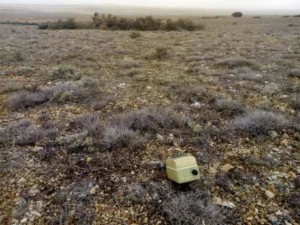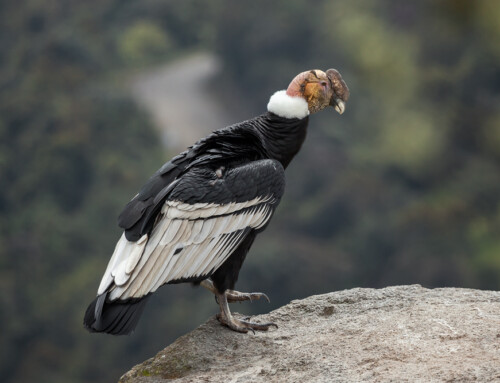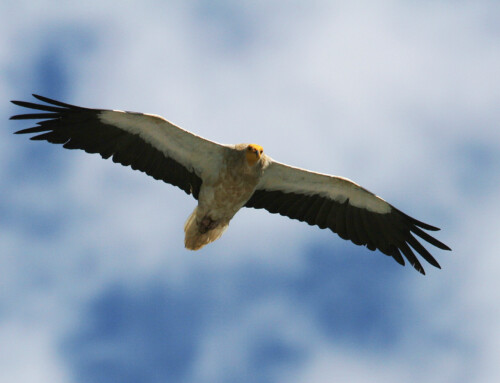Vocal Activity Rate index: a useful method to infer terrestrial bird abundance with acoustic monitoring. Pérez-Granados, C., Bota, G., Giralt, D., Barrero, A., Gómez-Catasús, J., Bustillo-de la Rosa, D. & Traba, J. 2019. IBIS. DOI: 10.1111/ibi.12728. VIEW
In the last decade the development of new techniques, such as unmanned aerial systems, DNA barcoding or GPS systems, has revolutionized the way we understand wildlife monitoring. Among them, the use of automated recorders has changed our understanding of soundscapes and monitoring methods for vocally-active species (Sugai et al. 2019). Acoustic monitoring has been used to detect presence of rare and threatened bird species, describe bird communities, evaluate population changes over time, etc. However, for a long time options of available models were limited and their high price hampered their use for general public.
More recently, the launch of open source cheap devices and the improvement of signal recognition software (some of them easy to use), to automatically identify the signals to look for, have increased the use of automated recorders for monitoring purposes. However, for many scientists and managers there still is a big obstacle to the utility of this technology: the inability to determine sound direction from automated recorders, and therefore the inability to estimate wildlife abundance around recorders.

Figure 1 A self-built autonomous recording unit placed for detecting the presence of Dupont’s Lark Chersophilus duponti. Automated recorders have been used for monitoring potential sites for this threatened species. At this moment more than ten previously unknown populations have been discovered thanks to this technique © Cristian Pérez
The Vocal Activity Rate (VAR) index, that is to say the number of songs per time unit for a species, has been used to infer population abundance of different taxa (including mammals, anurans and seabirds). This index is expected to increase with population density, since the presence of a higher number of birds simultaneously should produce a higher number of songs. However, this index has been considered of low utility for estimating terrestrial bird abundance, as prior attempts failed to found a strong relationship between VAR index and bird density (Zwart et al. 2014).
We examined whether VAR index, estimated by using both Autonomous Recording Units (ARUs) and automated signal recognition software, was related to local bird abundance in two terrestrial bird species, the European Bee-eater Merops apiaster and the Dupont’s Lark Chersophilus duponti. We took recordings at sites where ornithologists were performing field surveys in order to have an estimate of the actual bird number around recorders.

Figure 2 The European Bee-eater Merops apiaster showed a linear relationship between number of calls detected and flock size around recorders © Roger Guillen
We found a positive, strong and significant relationship for both species (Figure 3). So, now we are in place to answer the original question. Yes, we can infer terrestrial bird abundance using automated recorders. The VAR index seems to be a cheap, fast and adequate method to infer an abundance estimate. This index could be also used to assess population changes over time. For example, Buxton et al. (2013) used the VAR index to examine recovery of different seabird species after rodent eradication programmes.

Figure 3 Relationship between Vocal Activity Rate index and number of European Bee-eaters (left) and Dupont’s Larks (right) detected around recorders
According to our results and prior studies, the VAR index seems to be adequate for estimating population size for those vocally-active species living or singing in groups, such as seabirds at colonies or the European Bee-eater. The VAR index also seems to work properly with territorial passerines, at least for those that display long dawn choruses and whose singing activity does not vary with population size, as the Dupont’s Lark.
If you plan to use ARUs for estimating bird population size in your backyard, here you have a basic recommendation:
- Select a vocally-active species for monitoring purposes,
- Estimate the effective distance at which the recorder that you are going to use is able to detect the songs of the species using for example playbacks of bird songs played at different distances,
- Identify the period of the day when singing activity of the objective species is maximum and limit recording to this period
- Estimate the number of songs within a recording and correlate the number of songs per recording with estimated abundance of individuals that you saw within the effective distance of the recorders
The number of songs can be estimated manually, by listning to the recordings or automatically, using signal recognition software, such as Song Scope, which was used during our study and which is currently free.
If you are planning to use this technique for scientific or monitoring purposes the steps are the same, but you should also include an assessment of the quality of the recognizer, validate the correlation between VAR index and bird abundance and assess whether or not the effort (cost and time) required for estimating bird abundance using this method is worthwhile.
Nominate this article for a BOU Science Communication Award.
References
Buxton, R.T., Major, H.L., Jones, I.L., & Williams, J.C. 2013. Examining patterns in nocturnal seabird activity and recovery across the Western Aleutian Islands, Alaska, using automated acoustic recording. The Auk 130(2): 331-341. VIEW
Pérez-Granados, C., Bota, G., Giralt, D., & Traba, J. 2018. A cost-effective protocol for monitoring birds using autonomous recording units: a case study with a night-time singing passerine. Bird Study 65(3): 338-345. VIEW
Pérez-Granados, C., Bustillo-de la Rosa, D., Gómez-Catasús, J., Barrero, A., Abril-Colón, I., & Traba, J. 2018. Autonomous recording units as effective tool for monitoring of the rare and patchily distributed Dupont’s Lark Chersophilus duponti. Ardea 106(2): 139-147. VIEW
Sugai, L.S.M., Silva, T.S.F., Ribeiro, Jr.J.W., & Llusia, D. 2019. Terrestrial passive acoustic monitoring: review and perspectives. BioScience 69(1): 15-25. VIEW
Zwart, M.C., Baker, A., McGowan, P.J., & Whittingham, M.J. 2014. The use of automated bioacoustic recorders to replace human wildlife surveys: an example using nightjars. PloS one 9(7): e102770. VIEW
Image credits
Featured image: Dupont’s lark Chersophilus duponti © Cristian Pérez




